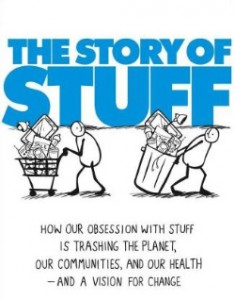 Many years ago on a high school field trip, we were taken to the local landfill. It was nearly full and the city needed to do something – find somewhere to take its trash. Out of this field trip came my first environmental inspiration. I researched recycling and determined that at that time, the only way to get people to participate would be to give them bins that would be picked up at the curb. I pitched it to my class, they joined in the effort…we went door to door …and the during the next election, the resolution passed.
Many years ago on a high school field trip, we were taken to the local landfill. It was nearly full and the city needed to do something – find somewhere to take its trash. Out of this field trip came my first environmental inspiration. I researched recycling and determined that at that time, the only way to get people to participate would be to give them bins that would be picked up at the curb. I pitched it to my class, they joined in the effort…we went door to door …and the during the next election, the resolution passed.
I felt pretty good for years to come but that enthusiasm has waned as I’ve learned that recycling programs are barely effective and we still generate too much stuff. “The Story of Stuff” came of out the internet movie sensation by the same name. Author Annie Leonard has been traveling around the world for more than 20 years learning about the world’s obsession with “Stuff.”. Not only do we have too much, but its too toxic. According to Leonard, we’re also using our natural resources far faster than the Earth can replenish them.
Leonard explains that the expanding economic system is about to hit a wall. It is running up against the limits of our planet’s capacity to sustain life. Economists predict that with the rate of growing populations, especially those in countries like China and India, coupled with the amount of CO2 emissions created from the production and transportation of our Stuff, we’re in trouble.
“Put it simply, if we do not redirect our extraction and production systems and change the way we distribute, consume, and dispose of our Stuff – what I sometimes call the take-make-waste-mold-the economy as it is will kill the planet,” writes Leonard.
While I don’t agree with her wholeheartedly, I do agree that she is on to something. I can’t tell you how many times in the past few years I’ve purchased something I usually don’t even need and it has a crazy amount of wasteful packaging. I am now even more aware as Leonard takes you through the entire process of Stuff from extraction, production, distribution, consumption, and disposal.
One area I found particularly interesting was when she discussed the new movement of waste-to-energy plants, which are essentially incinerators. Leonard explains that incineration is horrible because it “liberates the toxics contained in products into the air.” As she is explaining why this method is so horrible, she says that waste-to-energy plants should be called waste of energy plants.
She writes “the little bit of energy recovered from burning trash is a very dirty energy, releasing far more greenhouse gases than burning natural gas, oil, or even coal. According to the EPA, waste incinerators produce 1,355 grams of CO2 per kilowatt hour, coal produces 1,020, oil 758, and gas 515.”
After reading this section, I will be digging more into the waste-to-energy plants that are in production or construction.
There were a few times that I felt Leonard was preachy, but there were other times I felt energized to take stock of my “Stuff” and make changes to help reduce not only my Stuff, but encourage companies who are producing products to do the same (and remove the numerous unneeded toxic chemicals).
She ends to book by offering four individual actions: redefine progress, do away with war, internationalize externalities, and value time over stuff. She also includes example letters that you can send to manufacturers who produce products with toxic chemicals or too much waste. While I did not embrace all of her recommendations, all in all, this is an interesting book.

